
© Kazu. (Click image for larger version)
www.jessicalangdance.com
www.jessicalangchoreographer.com
For nearly 20 years, Jessica Lang has been steadily shaping her career as a ballet choreographer. She is a rarity in a field that has historically been dominated by men. Her creative portfolio consists of nearly 100 ballets, including commissions from American Ballet Theatre (ABT), Pacific Northwest Ballet, Joffrey Ballet, Birmingham Royal Ballet and the National Ballet of Japan, among many other companies.
In 2011, she added to her resume a new title – artistic director. And her troupe, Jessica Lang Dance (JLD), made its official debut at Jacob’s Pillow Dance Festival in 2012.
I caught up with Lang in Washington DC, where she is no stranger to the Kennedy Center. In May of 2013, she and her company collaborated with the National Symphony Orchestra on NEW MOVES: symphony + dance, a festival that aimed to explore creative possibilities between an orchestra and a dance group. Lang’s highly imaginative Scape, set to John Adams’s Violin Concerto, was one of the highlights of the festival.
In 2016, Lang took part in another artistic exploration – this time with opera. She choreographed the production of Verdi’s Aida which was directed by the Washington National Opera (WNO) artistic director, Francesca Zambello, and first premiered by the San Francisco Opera last fall. In September, the WNO unveiled this production at the Kennedy Center Opera House and once again Lang’s choreography – and the compelling performance of her dancers – made a memorable impression.
I talked to Jessica about her collaboration on Aida and her forthcoming projects, including a world premiere for American Ballet Theatre’s Studio Company and school. We also talked about her career as a dancer and a choreographer, about her company and her plans for the future.

© Scott Suchman. (Click image for larger version)
How did you get involved with Zambello’s production of Aida?
I have a working relationship with Francesca Zambello. She first commissioned me to do Stabat Mater for Glimmerglass Opera Festival in 2013; and we had a great chemistry working together. I had hoped that one day I could choreograph one of the operas she directed and this opportunity came along with Aida, which is a co-production of San Francisco Opera, Washington National Opera, Seattle Opera, and Minnesota Opera. This was actually the second presentation of Aida; the premiere took place last November in San Francisco.
During this production, the dancers of your company share the stage with opera singers. What is the most rewarding part of such collaboration?
It provides an opportunity to be very close to other art forms; and it’s always exciting. You can see it in both the dancers and the opera singers. There is a shared appreciation and a shared desire, like ‘I wish I could move’ or ‘I wish I could sing.’ They know that the talent next to them is world-class and it creates a really excited energy in the room that makes everyone want to perform at their very best. The dancers get their inspiration from the chorus and the leading singers and vice versa; and, of course, I carry all of that energy into the studio when I create the movement.
For you and your company, how is working on the choreography for Aida different from creating a new piece for dance?
In Aida, we have an awareness of the story and the overall picture that we are supporting. We have an awareness of the idea that Francesca wants the audience to see and to take away, so we know our place on the stage. We know when we can come forward and when we need to recede, whom we need to highlight and where the focus needs to go; and I guess it’s not that much different when we create for dance only. It’s just the entire process is very rich with talent and inspiration.
You mentioned your work on Pergolesi’s Stabat Mater. In fact, this piece will be performed in November in New York as part of White Light Festival. Please tell me more about this work.
This piece was also Francesca Zambello’s idea – to take Pergolesi’s Stabat Mater, a stationary oratorio sung by two singers, and create something visual, so the audience can appreciate the music while seeing dance. It has two opera singers: countertenor Anthony Roth Costanzo and soprano Andriana Chuchman. The singers are dressed just like the dancers; and they are onstage with the dancers, completely incorporated into the dance. It’s a seamless collaboration between music and dance. Once again, like in Aida, the dancers are very close to the singers, and vice versa. It’s just an incredible artistic experience.
Pergolesi died when he was just 26-years old and, apparently, Stabat Mater was the last piece he ever composed, which makes it all the more powerful and poignant. The oratorio consists of 12 hymns and is about Mary, standing at the base of the cross, mourning the death of her son. The first six hymns are the sort of retelling of the story about Mary and Jesus and the crucifixion; and in the last six movements the text becomes more of a universal prayer – it’s about anyone and for anyone. So we take the idea of religion and place it in humanity to show how anyone anywhere can mourn and can understand what it means to love and to lose that love.

© Karli Cadel. (Click image for larger version)
Has the production changed since its premiere in 2013?
Just like in Aida, we had the opportunity to re-imagine the choreography. In 2013, when I was creating Stabat Mater for Glimmerglass, I had to work with the young dancers who were hired for this production. They were wonderful and the piece was wonderful. But when I had the opportunity to use my own dancers, I was capable of doing more.
So it will be a recreation of the creation that was shown at Glimmerglass; and we will have new costumes as well. While it’s not necessarily a world premiere, it is a premiere of some sort.
Your new piece for American Ballet Theatre this season will be performed by the students of the ABT’s Jacqueline Kennedy Onassis School, the dancers of ABT’s Studio Company, and apprentices. Can you tell me what this new work will look like?
It’s a celebratory piece for the gala which will celebrate Kevin McKenzie’s 25th anniversary with the company as artistic director. That’s a significant milestone and achievement. In this work, I wanted to highlight that idea of celebration and to honor him by using the music of one of his favorite Baroque composers – Arcangelo Corelli. I have chosen Corelli’s three different concerti grossi.
ABT has an immense pool of talent. This company has some of the most incredible ballet virtuoso artists in the world and it also prepares and trains the dancers within the organization. I think it’s wonderful that, with this piece, Kevin wanted me to introduce ABT’s future talent to the gala audience. While we are honoring who is in the company now, we do look to the future to see who is coming.
In October, ABT is also bringing back to the repertory Her Notes, the piece you created last season. You chose music by Fanny Mendelssohn. What drew you to her music? Tell more…
The inspiration for this piece came from my desire to show that throughout history women have been making great art. When I listened to Fanny Mendelssohn’s music, Das Jahr (The Year), I instantly could see that this piece was just exactly, most iconically ABT. The music felt so right that I needed to make this piece for this company.
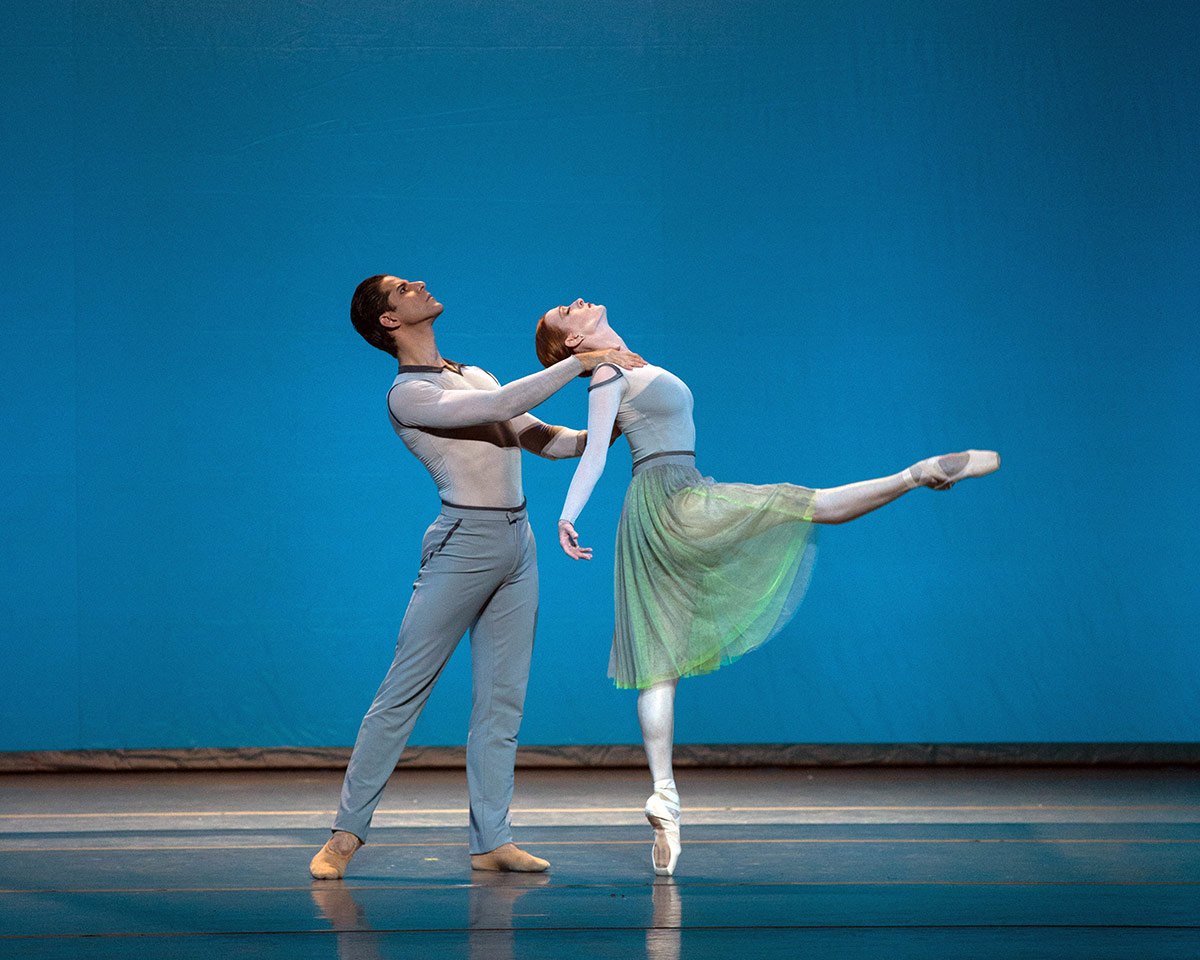
© Rosalie O’Connor. (Click image for larger version)
Your started your career as a dancer. How did that come to be?
I am originally from Pennsylvania. As a child, I grew up studying ballet. When I was about 13 years old, something clicked and I realized that this was going to be the career I wanted to pursue. I ended up going to Juilliard where I was introduced to modern dance and the professional dance world in general. After graduation, I performed with Twyla Tharp for two years until her company folded. At that point, I realized that I didn’t want to be a professional dancer – I just didn’t have the same passion for it. Instead, I craved a different kind of creative expression – I wanted to be in the studio, making my own dances.
So when Twyla’s company folded, I didn’t audition for another company. Because of that, I had a lot of pushback from many people who were saying that I was too good and I should continue dancing while I still could. But I went against their advice. I looked at the choreographers I admired, like Twyla and Mark Morris, and I looked at who they were when they started making dances and where they were in life when they started making those dances. And I realized that they are who they are because they have 30 years of experience as choreographers. They didn’t wait until they were done performing to start creating their own work.
Choreography has to be respected as an art form. This is not something you just do when you cannot perform anymore. For me, it’s about who you are as an artist, and where your talent is. And if it is choreography, you should start at the earliest age possible, so you have the longest chance to find your best voice.
What was it like dancing for Twyla Tharp?
I did enjoy the company. When I look back, I think my most memorable moments were when she was creating, especially when she was creating dances on me; and I remember how good it felt. So the memorable parts are positive and I enjoyed the experience. She is one of the most amazing choreographers living today.
What was your first significant work as a choreographer?
Definitely this was the first piece I’ve ever made in my life. It was called Oblivion and it was commissioned by ABT’s Studio Company in 1999.

© Rosalie O’Connor. (Click image for larger version)
So with your world premiere for ABT in October, you are coming full circle. This is a milestone for you as well.
That’s right!
How do you come up with ideas for your new works? What inspires your creativity? What moves you?
First of all, it is the world around me. You have to find the moments of quiet to think about what is in front of you, what themes are important to you.
I take a lot of inspiration from visual art and music and from the themes about people – the themes that everyone can relate to. When I create I think about the audience. I don’t want to disengage them. So it’s about connecting with people who are watching my work and not forgetting that the audience is the important part of the performance.
Do you do a lot of homework before coming to the studio to create a new piece?
I always walk into the studio prepared to an extent in terms of the music and the theme; but I never come prepared with movements. Movement happens in the studio – it’s something I create in front of me. I use the word “sculpt” a lot. I slowly sculpt images. I shape space with dancers’ bodies. Sometimes it happens really quickly and sometimes it takes forever to find a movement or an image that feels right. It takes experience to know what needs to be kept and what needs to be thrown away. And it takes time. But if you have a clear vision, you just follow it – you follow what you see in your mind.
Do dancers take part in your creative process? How much of what you do in the studio is collaboration between you and your dancers?
At this stage, I became a more visual than physical choreographer because I switched so early into making dance and seeing it from outside in. I rely on the dancers to move the image – it’s their body and they know it best. I don’t give my dancers an exercise and walk out the room. I am right there with them – describing, telling, showing, and demonstrating. We are finding it together. I might ask them: ‘What feels more natural? Which way do you want to go? How do you want to come out of this position? Where is the momentum taking you?’ So there is that kind of conversation. But when I have a very strong image, I keep shaping them until they see and understand what I see.

© Kazu. (Click image for larger version)
The dancers of my company at this point have become the strongest vehicle to read my mind and together we can arrive quickly, with very little communication, to a finished image. The longer I have my company and the closer I get to my dancers, the more I realize how special it is to have my own group of dancers. With them, I can better explore my potential as a choreographer.
How did you come to start your own company?
Before I started my own company, I had been working as a choreographer for 12 years. Actually, in the very beginning of my career, I didn’t call myself a choreographer. I was making dances to see if I could become a choreographer. But as commissions started coming in, I realized that I was making 6-7 dances a year and was living on my earnings from making these dances. But as my success as a choreographer was growing, I started thinking and questioning myself about my purpose as an artist: ‘Am I just going to make dances for ballet companies? What is my potential?’
In 2010, I received a call from the Joyce Theater telling me that I was nominated for a fellowship – a grant from The Andrew W. Mellon Foundation, which provided choreographers with rehearsal space, time, and money. I applied and was selected for this fellowship and ended up creating two pieces for a group of dancers. Ella Baff, who saw my work at “Works and Process” at the Guggenheim Museum, suggested that I present it at Jacob’s Pillow. But for this to happen, I needed my own troupe.
I wasn’t sure if I wanted to have a company, but after discussing it with my husband, who is a dancer with Alvin Ailey, I decided that it was the right time in my career and in my life to do it. With the financial support from an underwriter, I was able to start my own non-profit; and in July of 2012, Jessica Lang Dance had its debut at Jacob’s Pillow.
Running your own company is not for the faint of heart. Each day I dedicate more hours than I think is humanly possible to support and cherish this company, to nurture and move it forward. And I think that the results of this effort are now being seen and recognized as we kind of exploded into the dance world.
How do you select your dancers? What qualities are you looking for?
I look for intelligence, musicality, technique and physicality. I look for dancers who are equally trained in ballet and modern dance. I like the line ballet dancers can make and the detailed quality of their movements. But I also require from my dancers the sense of gravity, weight, and breathing and the ability to use the floor. And on the top of that I am interested in their spirit. Are they trying to communicate more than just the steps? Are they taking my material and making it come to life in a way that resonates with me, so I go ‘Yes, this is what I see, too.’
And personality matters, too. Our company is very small – only 9 dancers. We spend a lot of time together. It’s amazing how much time we spend together! This year, we have worked for 37 weeks. It’s a lot of time in the studio and on the road: we live together; we cook together; we eat together. So I need a good person in the room. I think it’s very important that there is a real connection among the people in the company.

© Scott Suchman. (Click image for larger version)
Where do you see your company in the long run?
I see more, bigger, better. I want to create. This is what my driving force is – creative process, creative opportunities. And when I say ‘more, bigger, better,’ I mean more opportunities, like this one, with the Washington National Opera or when, a few years ago, I had a wonderful opportunity to create a piece with architect Steven Holl.
I crave the opportunity to collaborate and to have a real creative process. I also want to continue touring to show these creations to the world. I want more people to be able to see them.
Tell me about your plans as a choreographer. What are you looking forward to?
I have many new projects coming up, which I cannot yet announce. I have two commissions from outside organizations. The one that is going to be premiered in June will be my 100th ballet and this is a huge milestone for me. In addition, for my company, I am making a big piece inspired by the work of Tony Bennett.
What advice would you give to a young dancer who aspires to choreograph?
Do it! This is the only way it gets done. And this goes for any career. You hear a lot of people saying ‘I wish, I want to, I would.’ No! Just say ‘I will’ and do it. It is the action of doing is what most important.
I have never given up. Every day is a rollercoaster of emotions: something good happens and something terrible happens. But I have never stopped doing what I love. Listen to yourself, follow your instincts, and just do it.
Thank you, Jessica






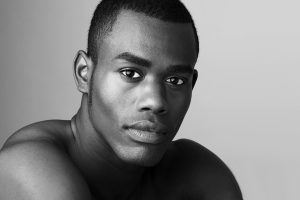


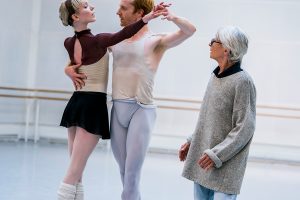

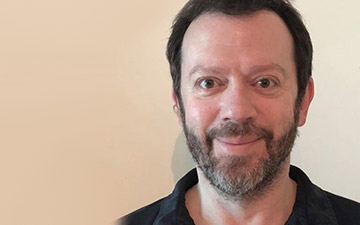
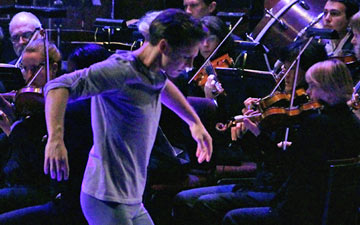
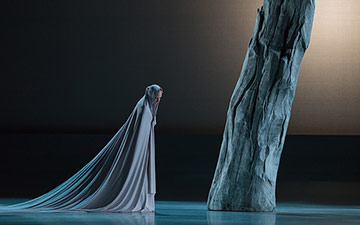
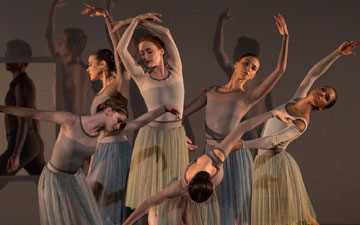

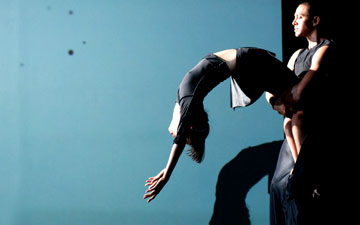
You must be logged in to post a comment.